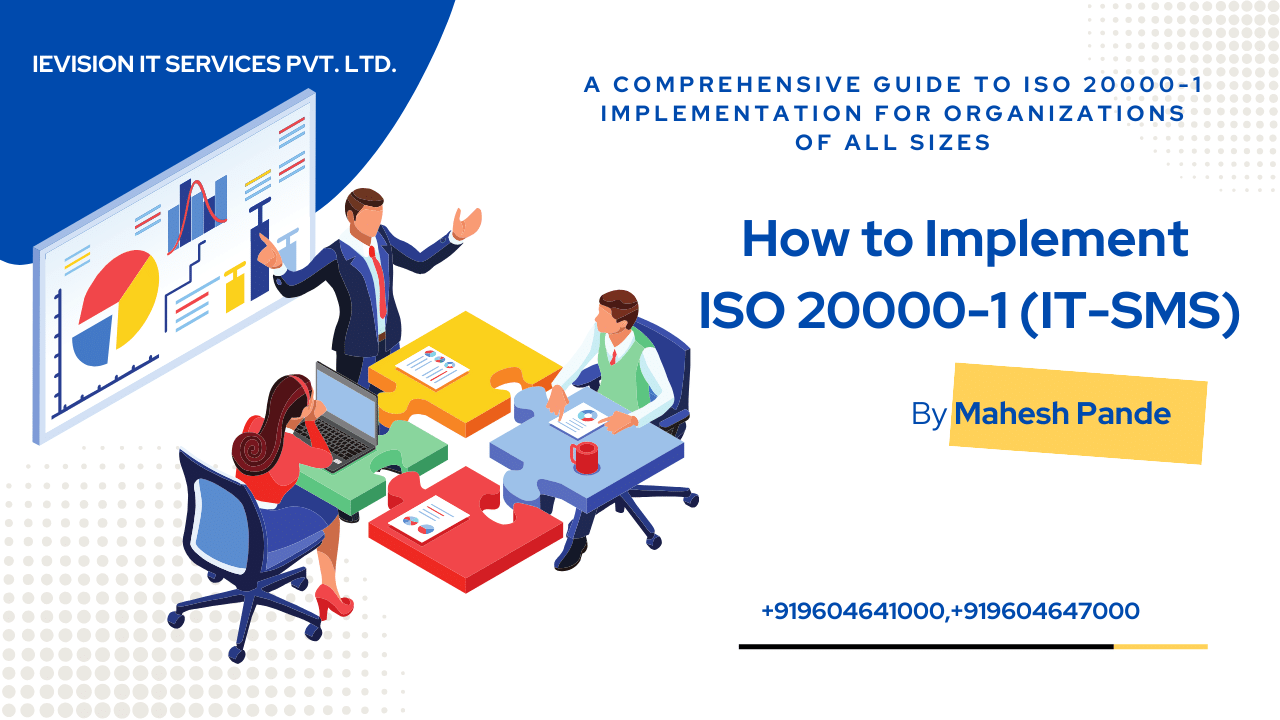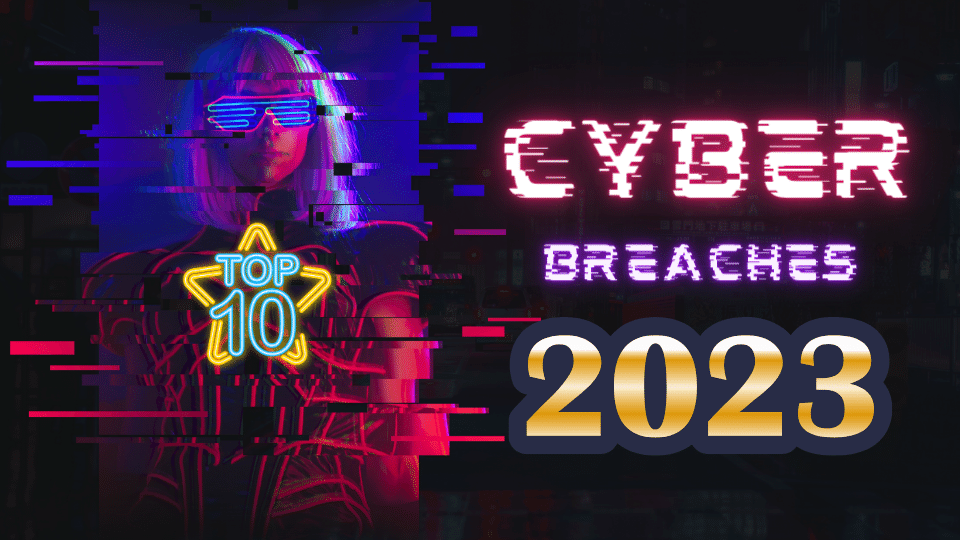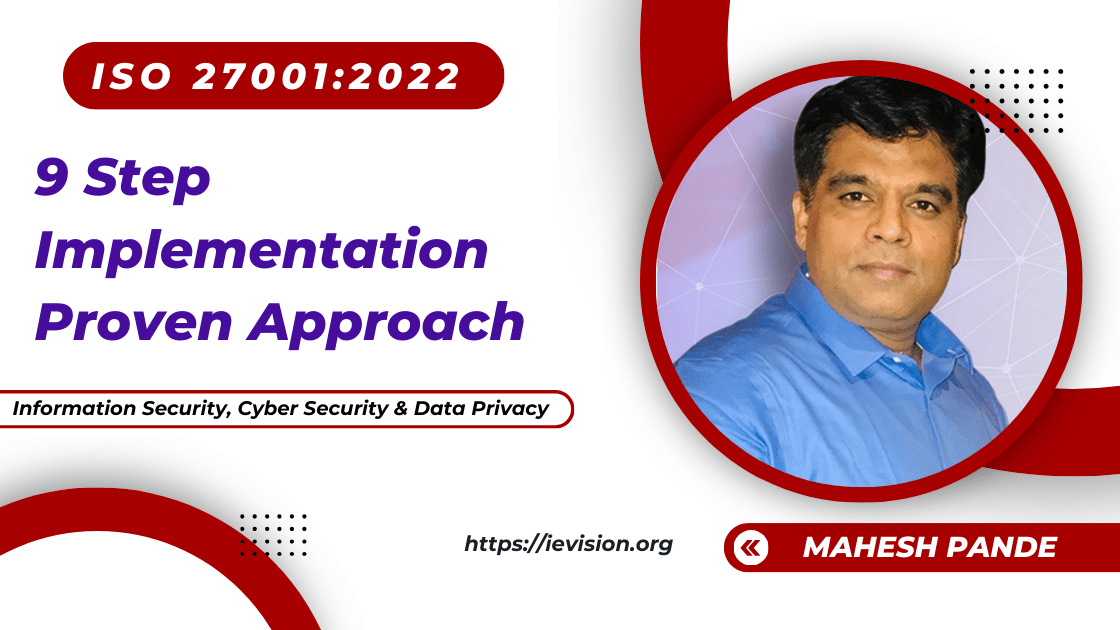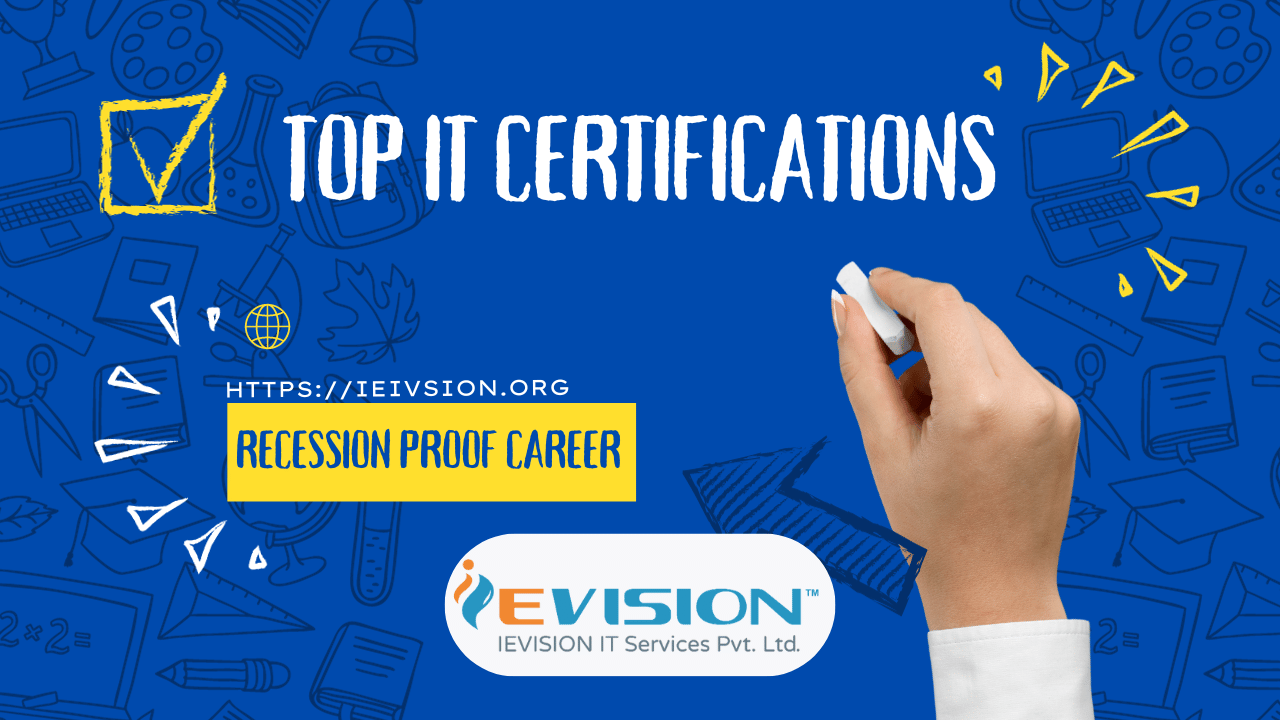
In today's digital age, IT Service Management plays a
crucial role in driving business success. To maintain quality IT services and
align them with business objectives, organizations often turn to international
standards such as ISO 20000-1 (ITS-MS) Information Technology Service
Management System. This globally recognized ISO standard provides a framework
for implementing effective IT service management processes. In this blog, I
have tried my level best to explore the key implementation considerations and
detailed steps for organizations of all sizes.
Understanding the organization
Being an IT Service Management Implementer, you must deep
dive int your organization like Industry, Business Services, Org Structure, Customers
(Internal & External), Partners, Suppliers, IT Infrastructure & Compliances
being maintained. Find out the key reasons & objectives for which organization
is implementing ITS-MS?
Introduction to ISO 20000-1:
ISO 20000-1 is an international standard that sets out the requirements for an organization's IT service management system (ITSMS). It focuses on the management and delivery of IT services, ensuring they meet customers' needs and expectations. Before embarking on the implementation journey, it is crucial to understand the standard's key principles, such as the plan-do-check-act (PDCA) cycle, continual improvement, and customer satisfaction.
Identifying Implementation Considerations:
Implementing ISO 20000-1 requires careful planning and consideration, regardless of the organization's size. Some key considerations include:
Leadership commitment: Top management support is vital throughout the
implementation process to ensure adequate resources and organizational buy-in.
·
Scope
definition: Clearly defining the scope of the ITSMS implementation helps align
the standard's requirements with the organization's specific business needs.
IT-SMS Scope includes, Physical and Logical boundaries.
·
Resource
allocation: Assigning qualified personnel (ITSM Manager) and allocating
necessary resources from each subfunction of IT for the implementation is
essential to ensure its success.
· Gap analysis: Every organization has certain best practices in place and as a implementer you should try to reutilize existing processes and policies. There are requirements defined in ISO 20000-1 Standard & Conducting a gap analysis against the standard's requirements helps identify areas that need improvement and sets a baseline for further actions.
Detailed Steps for ISO 20000-1 Implementation:
The implementation process can be broken down into the
following detailed steps:
A. Step 1: Project Initiation
and Planning:
B. Step 2: Gap Analysis and
Evaluation:
C. Step 3: Process Design and
Documentation:
D. Step 4: Implementation and
Operationalization:
E. Step 5: Internal Audit and Review:
A.
Step 1: Project Initiation and Planning:
·
Assign
ITSM Specialist or Dedicated Project Manager as IT-SMS Manager
·
Define
IT-SMS project objectives, roles, and responsibilities.
·
Establish
a project team and allocate necessary resources.
· Develop a project plan and a coherent timeline.
B.
Step 2: Gap Analysis and Evaluation:
·
Conduct
a thorough assessment of the organization's existing IT service management
processes.
·
Identify
gaps and areas of non-compliance with the ISO 20000-1 standard.
· Prioritize improvements based on criticality and impact.
C.
Step 3: Process Design and Documentation:
·
Develop
IT service management processes that align with the standard's requirements.
·
Document
processes, procedures, and work instructions.
· Ensure clear definitions of roles, responsibilities, and authorities within the documented processes.
D.
Step 4: Implementation and Operationalization:
·
Execute
the planned changes in close collaboration with all stakeholders.
·
Provide
training to staff members on the new processes and their roles.
· Establish a process for monitoring and measuring the performance of the implemented processes
E.
Step 5: Internal Audit and Review:
·
Conduct
regular internal audits to ensure compliance with the standard's requirements.
·
Address
any non-conformities and take corrective actions where necessary.
· Continually monitor and improve the IT service management system.
Conclusion:
Implementing ISO 20000-1 can improve an organization's IT service management processes & policies, leading to enhanced customer satisfaction, increased efficiency, and better overall performance. By understanding the key considerations and following the detailed implementation steps mentioned above, organizations of all sizes can successfully implement ISO 20000-1 and drive their IT service management to new heights.
Remember, implementing ISO 20000-1 is not a one-time task but an ongoing commitment to continually improve IT services and optimize customer satisfaction.
If wish to learn in detail, you can attend my 4 Days full packed agenda course on ISO 20000-1 Lead Implementer training and certification course and enable your organization to get ISO 20000-1 Certified!
Writer Profile: MAHESH PANDE GRC Coach and Consultant https://www.linkedin.com/in/mahesh-pande-accredited-trainer-and-consultant-29741b11
+919604647000, +919604641000, +919604664000,
info@ievision.org www.ievision.org
Since 2012, 15,500 +
Professionals Trained, 4.8/5% Google Rating, 100+ Training Programs, 200+
Consultants & Accredited by 7 Certification Bodies









